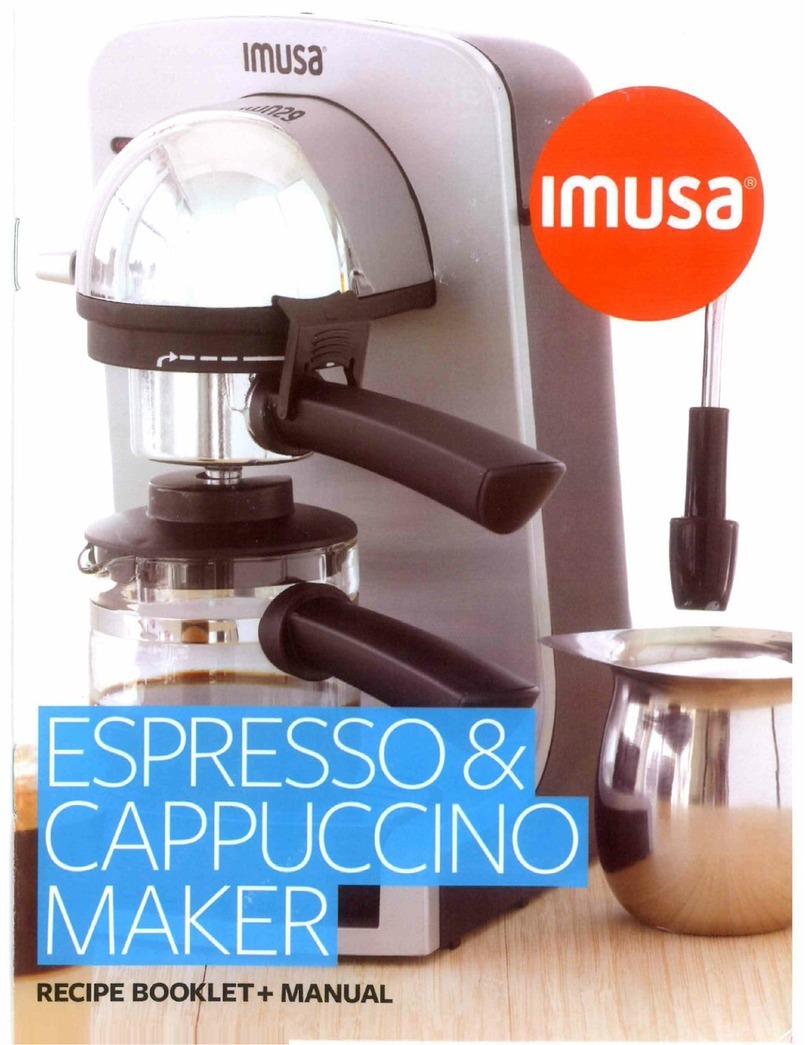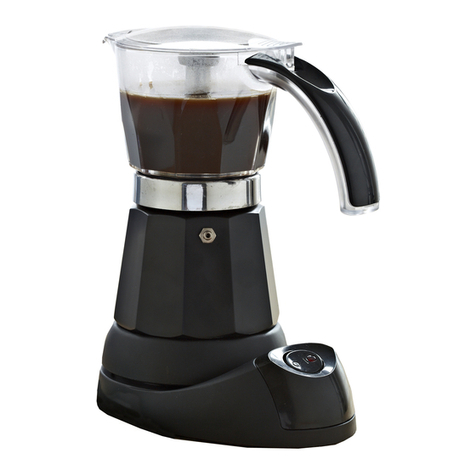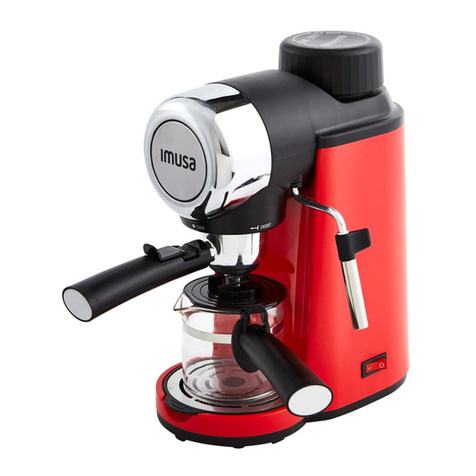•Place the empty glass carafe with lid on drip tray directly under the brewing head.
•Plug into a standard 120 Volt AC outlet.
•Rotate the function knob to the “cup” symbol ( ), which begins the brewing process. The red
light indicates that the coffeemaker is on.
•After approximately 2 minutes, espresso coffee will flow into the carafe.
Caution: Do not open the cap to the water reservoir or remove the filter holder during the brewing
process. Scalding may occur.
•When brewing stops, turn the function knob to OFF.
•Unplug unit and allow the coffeemaker to cool.
Caution: Do not remove the water reservoir cap until pressure is completely released. Follow the
“CAUTION: PRESSURE” procedures.
Cappuccino
•Fill a frothing pitcher (not included) ¾ of the way with cold milk.
Note: Skim milk or 2% will be the easiest to froth.
•Make sure the control knob is in the OFF position.
•Open top lid.
•Remove the water reservoir cap by turning it counter-clockwise.
•Fill the glass carafe with fresh cold water up to either the 2 or 4 cup mark.
•Pour the water from the carafe into the reservoir.
•Close the water reservoir cap by turning clockwise and ensure it is closed properly and tightly so
steam does not escape during the brewing process.
Note: Always be sure the cap is tightened securely before turning the coffeemaker on.
•Remove the filter basket and holder from the appliance by turning clockwise. With the
measuring spoon, measure the proper amount of espresso ground coffee and place into the
filter basket without packing too tightly.
•Place filter basket inside filter holder and into the brewing head by pushing it upward so that the
handle of the filter holder is aligned with the symbol “” on the front of the brewing head.
•Turn the handle counter-clockwise until it’s securely locked.
•Place the empty glass carafe with lid on drip tray directly under the brewing head.
•Plug into a standard 120 Volt AC outlet.
•Rotate the function knob to the “cup” symbol ( ), which begins the brewing process. The red
light indicates that the coffeemaker is on.
•After approximately 2 minutes, coffee will flow into the carafe.
Caution: Do not open the water reservoir cap or remove the filter holder during the brewing
process. Scalding may occur.
•As the coffee begins to flow into the carafe, hold a frothing pitcher under the steam nozzle.
•Raise a frothing pitcher into the frother just under the surface of milk. Rotate the function knob
to the steam position ( ). Moving a frothing pitcher in a circular motion for about 45 seconds.


































